COVID lockdown for Queensland: What it means for the Gold Coast
State schools in the northern Gold Coast have reversed advice sent to parents late on Monday night that they should keep their children at home if possible. FULL DETAILS >>>
Gold Coast
Don't miss out on the headlines from Gold Coast. Followed categories will be added to My News.
- COVID-19 Gold Coast: The year pandemic changed everything
- Three-day lockdown for Queensland after more COVID cases
STATE schools in the northern Gold Coast have reversed advice sent to parents late on Monday night that they should keep their children at home if possible.
Several schools had written to parents to say that because many of their staff lived in the greater Brisbane area, or had visited it, they were required to work from home. The schools said this would cause staffing issues, which meant they would not be able to offer classes as normal.
The messages caused confusion among parents who believed Gold Coast schools were to remain open because they were outside the lockdown area.
On Tuesday afternoon the schools reversed their previous advice, emailing parents to say school staff were considered "essential workers" and would be returning to work on Wednesday.
EXPLAINED: WHAT YOU CAN AND CAN'T DO ON GOLD COAST
The emails stressed that the schools would be open to all students, even those who may have visited Greater Brisbane.
"At the time of sending this email, I am pleased to confirm, following current advice from Queensland Health, our school will be open to ALL students from tomorrow Wednesday 31 March 2021, regardless of whether you have visited the Greater Brisbane area," a message from one Gold Coast principal read.
"However, if you or your family have been to any of the affected locations listed on the Queensland Health website, you should refer to the online self-assessment, get tested, isolate immediately and contact 13 HEALTH (13 43 25 84) if you have any questions.
"School staff are considered essential workers and therefore will be returning to work tomorrow."
Extracurricular and sporting activities remain postponed at many of the schools.
POLICE WARN BRISBANE MOTORISTS TO STAY AWAY
Gold Coast police are warning Brisbane motorists against attempting a trip south after a three-day lockdown came into effect at 5pm on Monday.
It is understood officers will patrol the M1 southbound for anyone travelling from Brisbane against the Chief Health Officer’s directions, as they did in January during Brisbane’s last three-day lockdown. Crews at the time pulled over some drivers and questioned them about their plans.

Speaking to the Bulletin, Acting Chief Superintendent Geoff Sheldon said Gold Coast police were seeking public co-operation across the next three days to ensure another mass coronavirus outbreak did not occur in Queensland.
“This means Greater Brisbane residents staying at home and not coming down to the Gold Coast and those on the Gold Coast also adhering to the lockdown rules,” he said.
“Police will be talking to members of the public and asking them to wear a mask if they are not but all our interactions are going to be done with communication and compassion.
“We are asking for co-operation from the public while we do this, so this lockdown is not extended. It is only three days.”
FEARS BRISBANE RESIDENTS WILL BRING VIRUS TO COAST
Gold Coast Primary Health Network chair Dr Roger Halliwell said he was concerned about Brisbane residents potentially fleeing to the Gold Coast to dodge the Greater Brisbane lockdown.
As Greater Brisbane returned to lockdown for three days from 5pm on Monday after 10 new COVID-19 cases were recorded, Dr Halliwell urged caution.
"That's happened previously and the Queensland Police Service turned around a number of cars who came from the Brisbane, Logan and Ipswich area and I'm sure they'll be doing the same," he said.
"It's disappointing when people do breach those restrictions. It's disappointing for the community and it puts the community at risk.
"We hope people will listen - it's three days and hopefully it will not be extended, but the risk of it being extended is in part dependent on people doing the right thing."
He urged Coast residents who may have become complacent about the risk of COVID-19 transmission to wear a face mask, to properly wash their hands, to practice social distancing and to get tested if they felt unwell.
Dr Halliwell was also worried more Coast residents were attending school and work while sick and displaying potential symptoms of the virus.
COAST COVID PATIENT'S CHEEKY TIP
"I think one of the challenges we face as a community is there is a lot of what I call COVID fatigue," Dr Halliwell said.
"People are a bit over it and so people haven't been washing hands, shaking hands instead of the distance routines and we're also seeing quite a large number of people with respiratory symptoms who are going to work, going to school - that sort of thing.
"I think the community has got a little bit complacent and so this a really a timely reminder for people to continue all the good work they've already been doing and hopefully we'll be able to break the cycle quickly enough that we'll be in business for our anticipated Easter breaks and things.
"It's the wake up call that we didn't want but it's our reality."
He said very few Coast residents had been vaccinated.
JANUARY - INSIDE FIRST COVID CASE
THE fear was palpable in the conference room on the 14th floor of the Queensland Health building on Brisbane’s Charlotte Street.
It was late in the afternoon of January 29, 2020 and the sun remained high in the summer sky as the afternoon gridlock built up on the streets below, oblivious to the world-changing drama playing out above them.
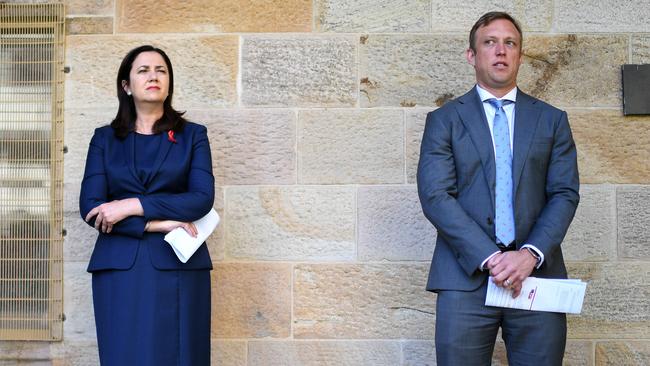
The room’s occupants, Health Minister Steven Miles and his staff, Chief Health Officer (CHO) Dr Jeannette Young and Queensland Health Director General Dr John Wakefield sat waiting for a phone call from the Gold Coast.
It had been less than 24 hours since Queensland Ambulance officers were called to the Peppers resort at the Oracle building in Broadbeach where a 44-year-old Chinese national who had arrived on the Gold Coast in a group tour was unwell with a fever.
A new virus, COVID-19, had spread rapidly through China in the previous weeks and Australia had recorded its first cases in Sydney and Melbourne a handful of days previous.
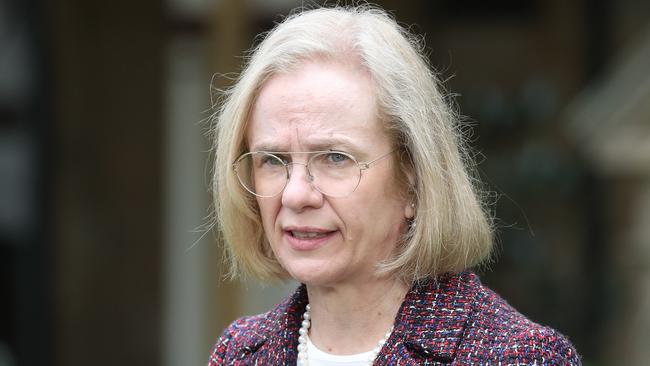
The man was taken to the Gold Coast University Hospital, isolated and immediately tested for the virus.
It was 24 hours later when Mr Miles and his colleagues sat nervously awaiting the results when Dr Young’s phone rang, confirming their worst-held fears – COVID-19 had arrived in Queensland and its first case was on the Gold Coast.
“There was (a feeling of) nervousness in the room but we knew we were prepared for it,” Mr Miles said.

“It was a period of people not quite realising what this was going to mean.
“And then we fully expected the rest of the tour group to get it when they were in quarantine, for a while with little kids.”
Meanwhile, at 1 William Street, Premier Annastacia Palaszczuk took Dr Young’s call confirming the first positive test.
“In one of our first briefings, Dr Young revealed that at its worst, an outbreak could claim 35,000 Queensland lives,” she said.
“From the moment I took the call (about the first case), I knew the government’s priorities would have to change.
“Our focus had to be on containing the virus and keeping Queenslanders safe. It’s still my focus and it’s what drives me to this day.
“It was a tough week to say the least — I didn’t get much sleep.”

After a series of crisis meetings, the announcement of the positive test was made in a statement released just after 7pm on January 29.
It was the moment COVID-19 exploded from something happening overseas to a clear and present danger that has dominated the lives of Gold Coasters daily since.
Unbeknownst to the public, preparations for a potential outbreak had been underway in secret for weeks.
While COVID-19 had become widely reported in late January, the general public had largely not taken the threat of the insidious disease seriously until the virus’ arrival on the Gold Coast.
Dr Young first became aware of the virus in the last days of December 2019. Senior state government figures, including Mr Miles and Ms Palaszczuk, were briefed in early January.
Ms Palaszczuk said little information had been available of the outbreak in Wuhan, but things changed rapidly in late January.
“On January 22, we knew enough to declare a Public Health Event of Statewide Significance – ahead of all other states and territories,” she said.
“I received regular updates from Dr Young and by February 1, we were so concerned that I called an urgent meeting of the Queensland Disaster Management Committee.
“It was a Saturday morning. By that point, I think everyone was beginning to understand the seriousness of the situation.
China at the time was the Gold Coast’s biggest overseas tourist market, with more than 251,000 tourists travelling to Australia’s tourism capital annually, bringing $420 million into the economy.
With those kinds of numbers, Mr Miles said health bosses were aware that an outbreak in the region was inevitable, with initial modelling suggesting it would occur by January 22.
“We got the first official communique on January 10 and quickly set up our incident management team,” he said.
“We spent the second half of January really getting ready. We thought Queensland was most likely to be one of the first places outside of China, just because of the amount of travel between there and Queensland.
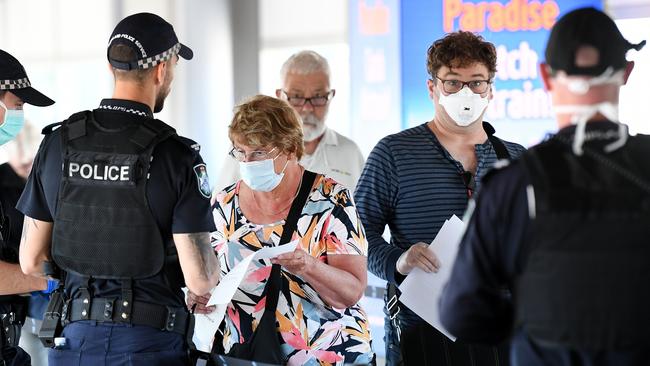
“It was like waiting for a Queensland storm to come – you’ve got the warning, you’ve battened everything down, but just waiting for it to hit.
“Throughout the period between January and March we never expected to get on top of the first wave.
“We thought the restrictions we would put in place would allow us to manage the numbers downward but we didn’t realise that Queensland and Australians in general would be so effective and eliminating the spread.”
The spread of coronavirus on the Gold Coast, like the rest of Australia, was relatively low through February 2020 and it was initially viewed primarily as a tourism crisis because of the federal government’s travel ban on China.

Then-Destination Gold Coast chief executive Annaliese Battista estimated at the time the crisis would cost the city around $40 million, a figure eventually revised to nearly $4 billion.
While Gold Coast tourism bosses battled with the state and federal governments for assistance, senior health figures prepared for what they feared would be a dramatic rise in positive tests in March 2020.
Armed with this modelling, the state government began buying ventilators while health officials brought forward surgery cases to ensure hospital schedules would be less crowded by the time a large number of positive tests presented.
Mr Miles said early modelled painted a disturbing worst-case scenario.
“We expected first large-scale transmission in March and then a period from April to October, that one in four Queenslanders would be infected and that we’d peak at 12,500 deaths,” he said.
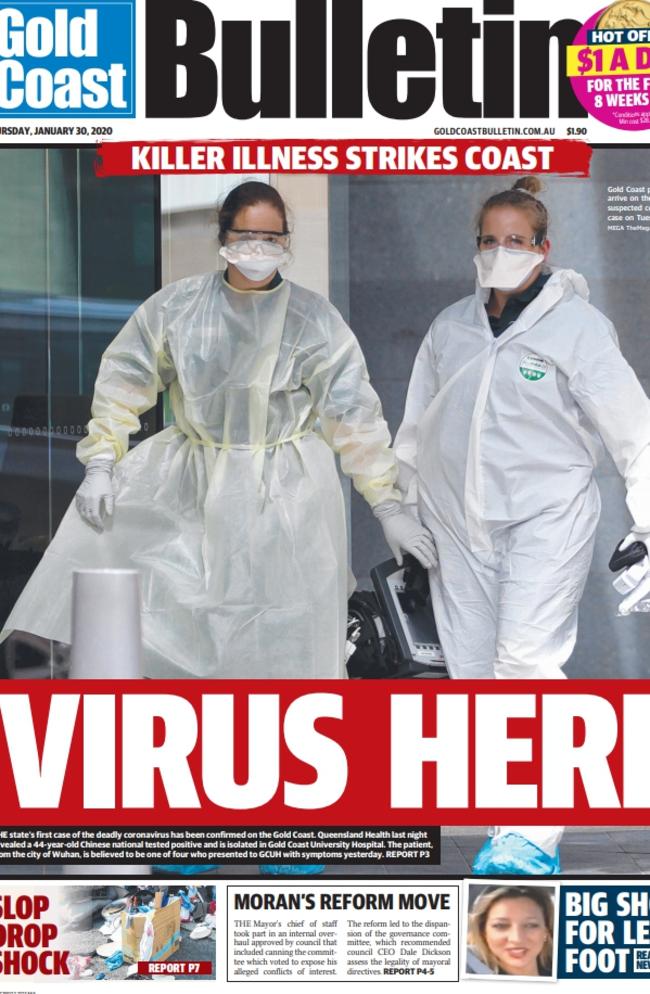
“Those numbers were pretty shocking and if you look at the US or the UK, that modelling was probably pretty accurate. They’re the kinds of numbers they’ve seen.
“So there were a few times I thought, ‘Oh, this could really take off’. And, you know, we ended up peaking at 78 cases a day, which most places around the world wouldn’t even consider a wave.
“That’s, you know, 12,494 Queenslanders who are alive today, but probably wouldn’t have been.”
Six Queenslanders have died during the pandemic to date while tens of thousands more have found themselves economically devastated by border closures and lockdowns introduced to slow the virus’ spread.
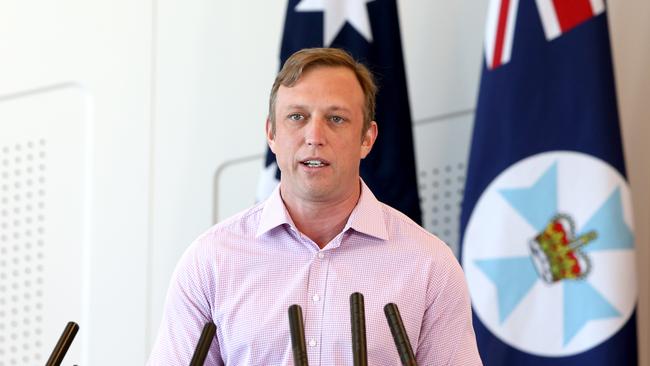
Despite this enviable health record, Mr Miles said the long-term impacts weighted on him.
“(I feel) relief for those lives (saved), obviously, but also the toll that that takes on the health workforce, really weighed heavily,” he said.
“And even now, because our health workforce is very mobile, many of them have worked in the UK and the US and other places, and they’re constantly in contact with people there.
“Many of those health professionals will never recover, let alone the number that have been infected themselves.”
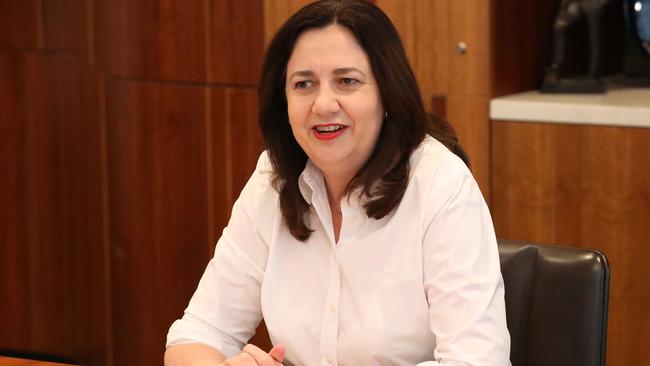
Ms Palaszczuk told the Bulletin this week that the events on the Gold Coast in January 2020 paved the way for the state’s low numbers and strong response to the virus.
“The decisions we made in the first 48 hours were crucial to limiting the spread of coronavirus in Queensland,” she said.
“I still think about that day. It’s humbling to think how far we’ve come.
“Queensland was the first to declare a public health emergency on January 29.
“I see what’s happening in the Northern Hemisphere and often reflect on how important it was to contain that first case.”
True cost of COVID-19 to the Gold Coast
ONLY now, 12 months on from the first recorded case in Queensland, is the real toll from COVID-19 emerging. Below are the responses to a parliamentary health committee inquiry.

COVID DEATHS
One year on since the first recorded COVID death, the figures worldwide have topped more than two million people. Cases have now climbed to 95 million worldwide.
Six deaths were recorded at the beginning of the pandemic in Queensland; none since. The state has had 1303 positive COVID-19 cases, of which 23 are currently active, all isolated in hospital.
Chief Health Officer Jeannette Young said she was proud of the state’s response with minimal community transmission, but regarded the risk as remaining high with the virus still detected in wastewater.
The virus is “unpredictable” and “we will need to continue current measures such as social distancing and hotel quarantine”.
Dr Young says emergency powers must remain in place to respond quickly to the spread of more stronger variants.
“Delays in a response to a potential outbreak can mean that it is too late,” she says.

WIDER HEALTH IMPACT ON THE COMMUNITY
Mental Health Commissioner Ivan Frkovic said every Queenslander was impacted by COVID in terms of increasing stress levels.
The impacts ranged from financial challenges, job losses, pressures of home schooling and working from home along with isolation and border closures.
Medicare subsidised mental health service provisions had increased by 15 per cent.
Paramedics and police reported “heightened levels of psychological distress” from call-outs to more mental health patients.
Between March and August last year, the Queensland Ambulance Service reported a 20 per cent increase in triple-0 mental health-related incidents.
Self-harm and suicidal ideation presentations to emergency departments increased by 11 per cent.
Kids Helpline had a 24 per cent increase in counselling services.
Alcohol and drug information services recorded a 54 per cent increase in weekly calls between March and June last year.
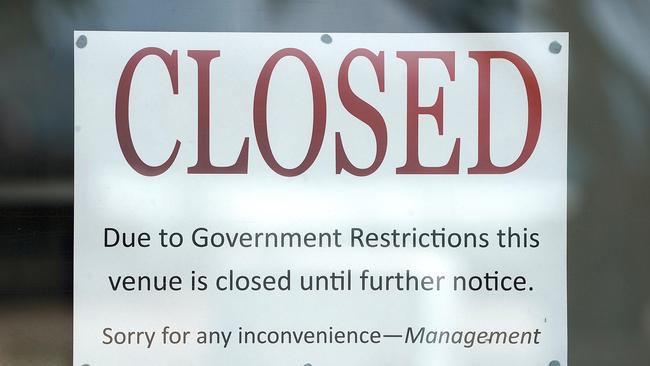
POLICE RESPONSE TO THE PANDEMIC
Under public health directions, police processed 32,553 international passengers and served 41,197 quarantine notices.
They met 12,287 domestic flights including almost 2000 from COVID hot spots.
Police have refused the entry of 1348 passengers into Queensland and directed 36,754 people into quarantine.
Officers have intercepted 1,182,498 vehicles at the border, turned around 14,417, which included 22,290 people in the cars and 19,432 directed into quarantine.
Police were required to do 13,161 compliance visits.
About 2763 people remain in quarantine, 60,449 have completed time in selected hotels and 10,827 compliance visits were conducted of those who remained in their homes.
While 2666 fines were issued for noncompliance almost five per cent were later withdrawn. About 50 people were arrested.
With restrictions lifted, about 600 police are working on COVID. Numbers peaked at 1300.
Deputy Commissioner Stephan Gollschewski expects the COVID Command will continue to require some sort of response “into next year”.
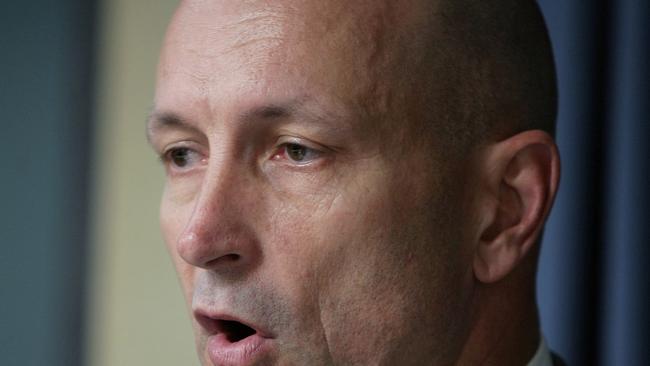
COMPLAINTS ABOUT THE LOSS OF HUMAN RIGHTS
The Queensland Human Rights Commission received 440 inquiries and had managed 158 complaints. Fifty-four related to hotel quarantine.
Some hotels, including the Voco Hotel on the Gold Coast, had very small rooms.
Commissioner Scott McDougall told a parliamentary committee “there were rooms being used that do not even have a window, let alone a window that opens”.
About 63,000 people have been through the quarantine process with only one breach leading to a community transmission.
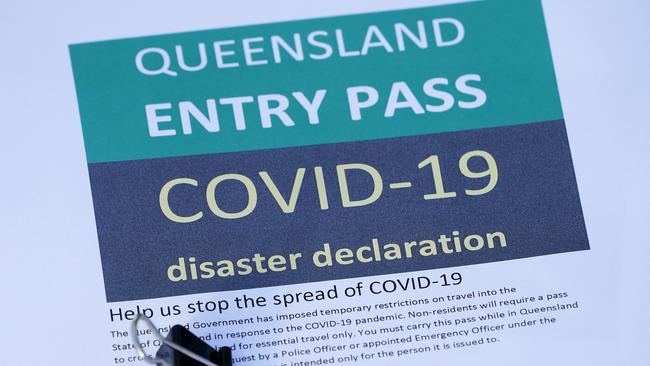
HOW BUSINESSES AND THE ECONOMY WERE IMPACTED
Queensland Hotels Association chief executive Bernie Hogan says the 102-day shutdown “brought our industry to its knees in many parts”.
The most recent lockdown in Brisbane cost the industry $40 million worth of revenue, not accounting for impact on the Gold Coast from missing city travellers.
Mr Hogan describes Easter as “the valley of death” for most businesses.
“There are no forward bookings. We are talking single-digit occupancies, which is horrific when you are looking at those people who have come through the year they have,” he said.
Gold Coast Chamber of Commerce president Martin Hall said businesses were not prepared for the “uncertainty and moving targets” set by the government on lockdowns, restrictions and border closures.
The chamber’s own pulse survey revealed a 50 per cent drop in the September quarter in revenue for businesses.
Mr Hall said the last lockdown gave businesses no capacity to plan for “day four”.
“Businesses, as I said, are very resilient and we can adapt, as long as we have a visual horizon. That is the key,” he says.
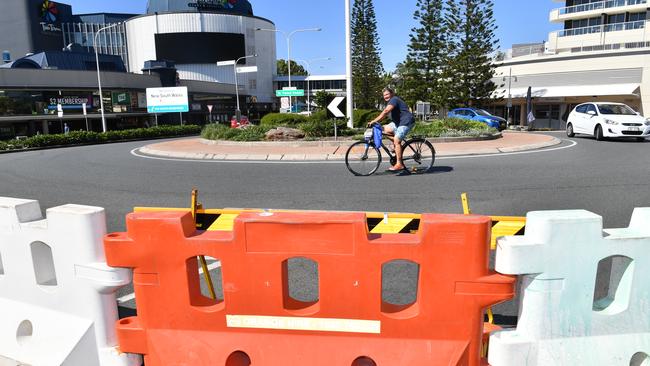
“CATASTROPHIC” IMPACT ON TOURISM
Tourism accounted for about $25 billion in spending in the Queensland economy during 2019 — about $70 million a day.
Industry leaders are still counting the costs, but the annual figure for 2020 will be half of that.
Queensland Tourism Industry Council chief executive Daniel Gschwind says it is impossible to describe the impact of COVID-19 without using the words like “catastrophic” and “devastating”.
“Some 12 months on from the start of this crisis, our industry is still under severe stress. The mental and financial toll it has taken (on 240,000 employees) is enormous,” he says.
The state’s $7 billion international tourism industry was non-existent, and at least half of interstate tourism was lost, worth $10 billion a year.
“Some $12 billion will be lost in 2020 for our industry,” Mr Gschwind says.
August through to September were the first months which saw the industry turn the corner before “falling off a cliff” with the Brisbane lockdown.
Queenslanders have decided to “get out and get around” visiting the Scenic Rim, Stradbroke Island and the Fraser Coast but big gaps remain.
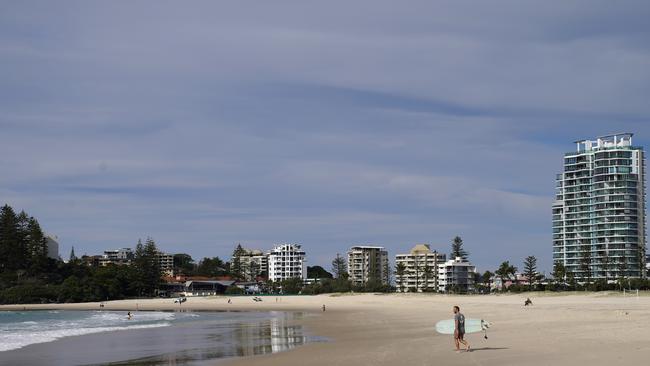
HOW OLDER QUEENSLANDERS WERE IMPACTED
Queensland has 800,000 people older than 65, but the vast majority do not live in aged care.
Council on Ageing Queensland chief executive Mark Tucker-Evans says 28,000 people offered “care” services responding to about 5000 residents seeking help.
He said mental health was a major concern with many older people putting off once-in-a-lifetime trips. Those in aged care were restricted in leaving the facility and getting fresh air.
Mr Tucker-Evans called for improved local responses.
“We have seen that in some cases in areas which have had absolutely no cases of COVID or are in danger of it have been locked down,” he says.
FULL DIGITAL ACCESS: JUST $5 A MONTH FOR THE FIRST THREE MONTHS

VACCINES — AND THE FUTURE
Australian Medical Association chief executive officer Dr Brett Dale believes the hospital system can manage the distribution of the Pfizer vaccine.
He also suggests the Therapeutic Goods Administration is taking a very safe approach to determining the safety and effectiveness of vaccines by not rushing the process.
He said the education program would be important and there may be “enticements” for people to participate.
“Those enticements might be incentives that allow them to travel, for example,” Dr Dale says.
Vaccines will be made available to priority groups with “1A” the first, including people at risk on international borders — quarantine workers, flight crews, people in quarantine and frontline workers in health, aged care and disability.
The Coast will be one of several hubs. Children cannot get the vaccine yet because they have not been part of trial testing.

TESTING CENTRES
Southport MP Rob Molhoek raised concerns at a parliamentary hearing from elderly residents about “eight-hour waits and massive queues to have testing done”.
Dr Dale said the strategies put in place for testing centres was to reduce risk of exposure.
GPs might see a diabetes patient and they would be at risk of COVID-positive clients arriving for tests, he said.
“There were legitimate reasons for shifting them outside of general practice, but there was no better place to seek advice as to whether you needed to be screened,” he said.
Originally published as COVID lockdown for Queensland: What it means for the Gold Coast


